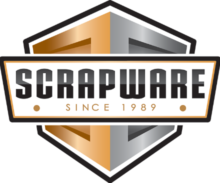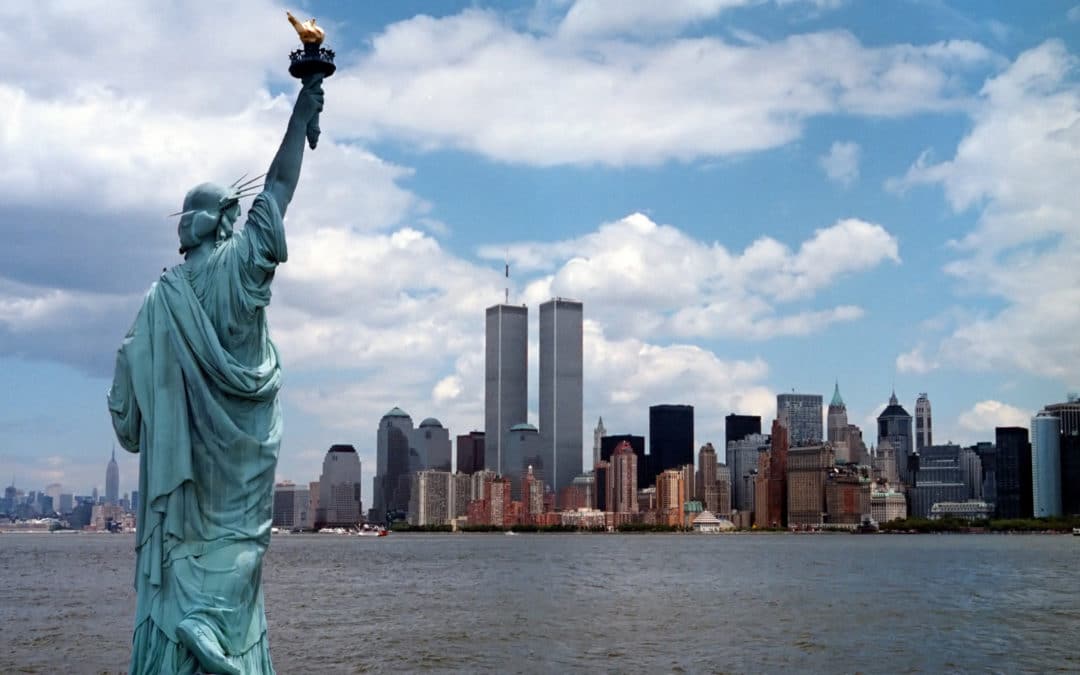It’s been 21 years since the tragedy of Sept. 11, 2001.
How to deal with the volume of scrap metal and debris from the fallen World Trade Center (WTC) has been one of the most difficult issues in the aftermath of 9/11.
As government entities, private businesses and charitable organizations have worked to clear, sell, and distribute the remnants, the result has been that the scrap metal has been used in some creative ways.
It is estimated that some 200,000 tons of steel collapsed into the ground when the twin towers collapsed. According to an article in the journal Places, by spring of 2002 most of the structural steel had been transported to New Jersey. New York City sold about 175,000 tons of the scrap. Some was sold to various places in the United States and about 60,000 tons went to companies in China, India and South Korea according to news reports. Among what remained was about 7,000 tons of structural steel and artifacts. This was moved and stored in an 80,000 square foot hangar at John F. Kennedy International Airport and various entities began to express interest in using the steel for various memorials.
The United States Navy amphibious vessel, the USS New York, is the physically largest functional object made from World Trade Center scrap.
About seven and a half tons of steel recycled from the twin towers’ collapse was used to build this $1 billion ship constructed by Northrop Grumman Ships Systems Louisiana shipyard. The ship is amphibious because it is used to transport and land troops, supplies and equipment such as helicopters and transport troops from both the Navy and the Marines, according to the ship’s website.
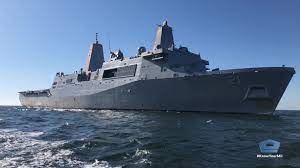
The USS New York was put into service on November 7, 2009. The steel to construct the ship was presented to the Navy as a gift from the city of New York. The scrap had been located at the Staten Island landfill where much of the scrap was shipped immediately after the tragedy, and it was believed to have come from the South Tower. The steel was treated and then smelted and poured into molds at the Louisiana foundry. The recycled steel was used to construct the ship’s bow stem which is the very front of the ship that cuts through the water.
For naval vessels, state names, such as New York, are usually reserved for submarines. Special consideration was given for this ship, however, because a surface ship is more accessible to the public, and the goal was to have the ship serve as a memorial to 9/11. The USS New York is homeported in Norfolk, Virginia, and its official motto is “Strength forged through sacrifice. Never forget.”
WTC scrap metal is now located in all 50 states and around the world.
Starting in 2008, the Port Authority of New York and New Jersey initiated a process by which to distribute the remaining scrap housed in the JFK hangar. The goal was to facilitate a way in which these artifacts could be distributed to organizations seeking to establish their own memorials. Some 840 pieces of steel were cut to create 2,200 chunks of scrap, according to a 2015 article in The Atlantic. Since then, they have distributed 1,800 of pieces of scrap metal as artifacts to government and non-profit groups for free. Groups interested in acquiring a piece of the scrap metal were required to submit an application describing their design and intended use.
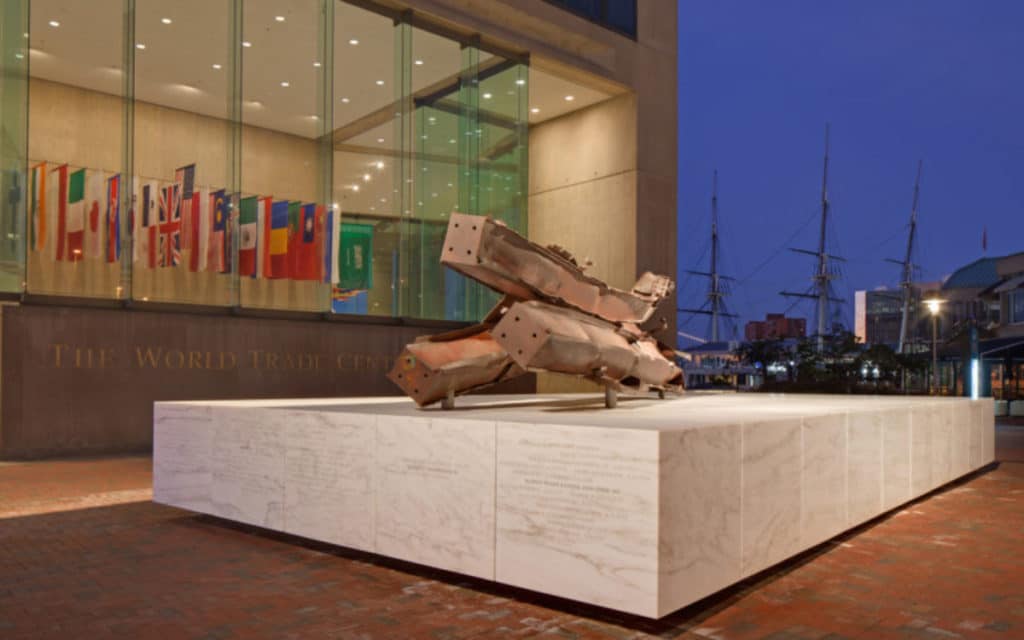
Now, 14 years later, the program has provided steel for memorials all 50 states and more than a dozen overseas locations. A number of cities like Baltimore have large pieces in public spaces, but many more pieces are located in smaller towns outside of fire departments, inside municipal buildings, on the grounds of technical colleges and in traffic circles. For example, in Westerville, Ohio, an 18-foot-long two-ton piece of steel stands in their First Responders Park. In Christchurch, New Zealand, a 20-foot long spear of steel was sculpted into a tribute for the World Firefighters Games. A section of a square WTC column stands outside the National WWII Museum in New Orleans. According to The Atlantic article, all applicants must agree to publicly display the steel. It can not be used for personal purposes. After applications were submitted, the Port Authority officials worked with the groups to determine the best size and shape to fit their use. Fire chiefs from Arkansas to Minnesota have exchanged emails with Port Authority officials for years to obtain scrap for their memorials.
Sending steel “home”
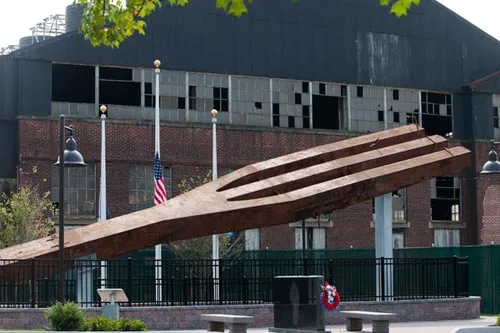
According to the 9/11 Memorial & Museum blog, some of the WTC steel that remained standing was returned to the place it “was born.”
About 500 tons of structural steel was transported on more than two dozen flatbed trucks to Coatesville, Pennsylvania. It was there that the giant structural supports called “steel trees” were forged in 1969 by Lukens Steel Co. The steel was forged there to frame the perimeter of the towers’ first nine floors. The Associated Press reported at the time that the Coatesville historic association wanted to honor those who lost their lives on 9/11 as well as the steel workers who created the steel for the monumental buildings. Members of the community gathered at a ceremony when the remnant was delivered marking the WTC steel’s “homecoming.”
About ScrapWare Corporation: Since 1989, Rockville, Maryland-based ScrapWare Corporation has been the software of choice for the recycling industry. Its ease of installation and simplicity saves users time and money, while helping them achieve compliance and maintain accurate business insights. With state-of-the-art functionality that‘s tailored to each organization’s unique requirements, ScrapWare is an advanced dynamic software solution that alleviates the most pressing recycling industry worries. For more information, please call (301) 517-8500 or visit https://www.scrapware.com/.
